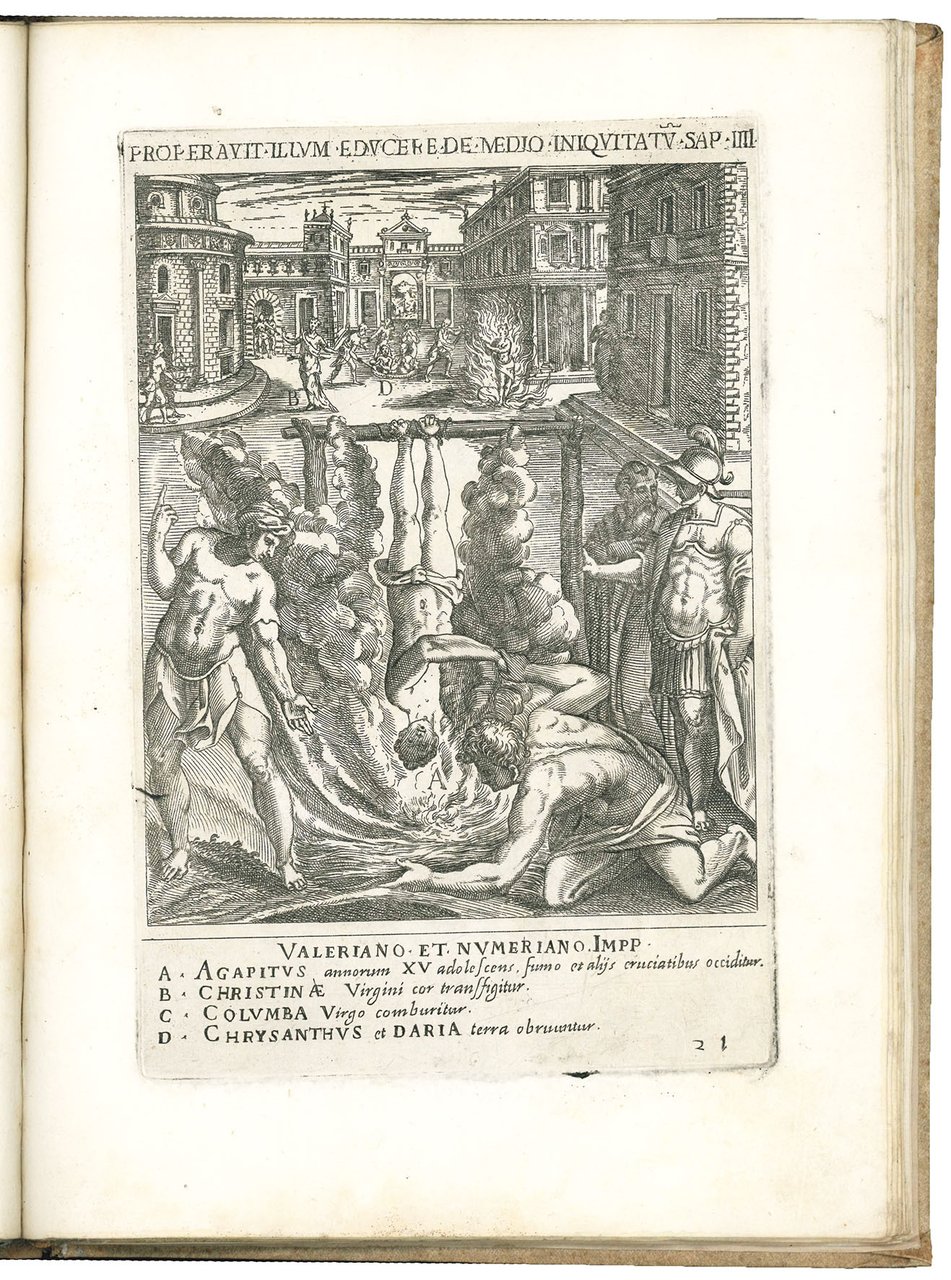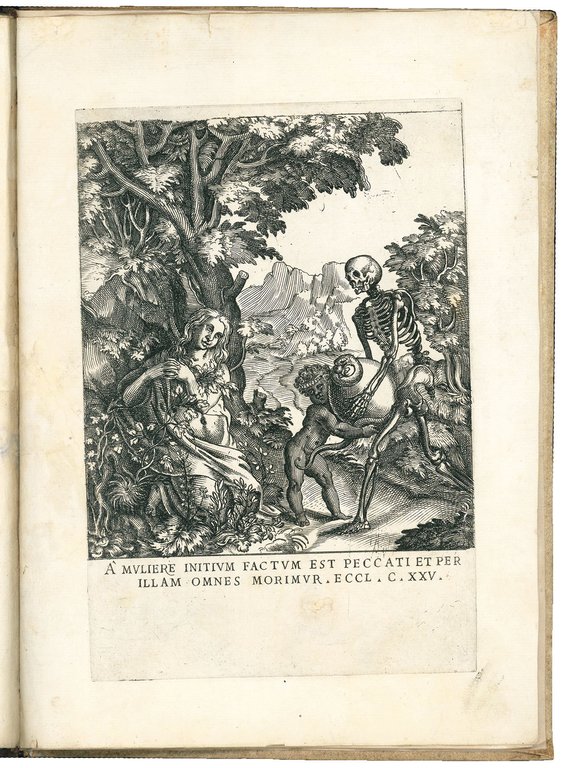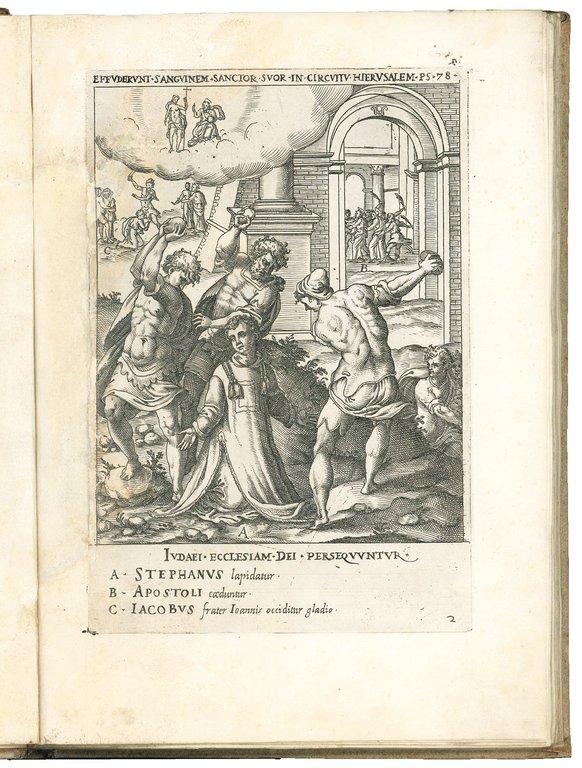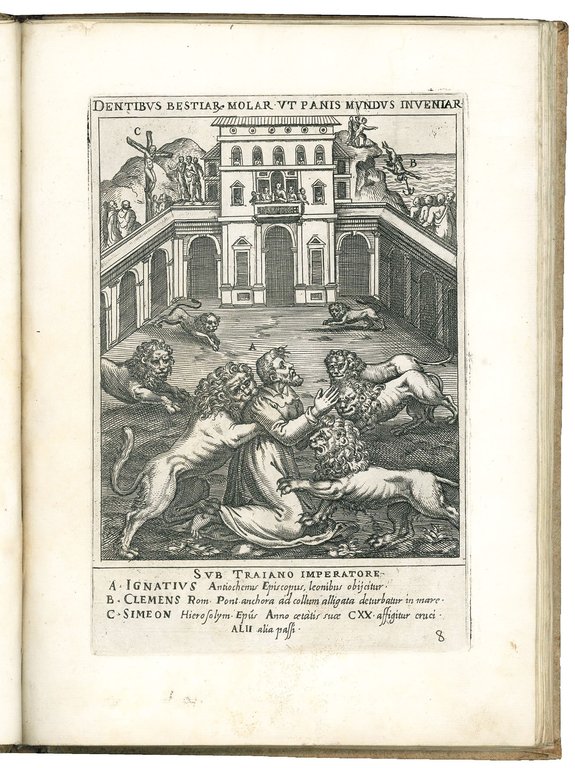





Rare and modern books
CAVALIERI, Giovanni Battista (1525-1601)
Ecclesiae militantis triumphi sive Deo amabilium martyrum gloriosa pro Christi fide certamina prout opera RR Patrum Societatis Iesu collegij Germanici et Hungarici moderatoris impensa S.D.N. Gregorii PP. XIII in ecclesia S. Stephani Rotundi, Romae Nicolai Circiniani pictoris manu visuntur depicta ad excitandam piorum devotionem a Ioanne Bap.ta de Cavallerijs aeneis typis accurate expressa
Bartolomeo Grassi, 1585
1950.00 €
Govi Libreria Antiquaria
(Modena, Italy)
The correct shipping costs are calculated once the shipping address is entered during order creation. One or more delivery methods are available at the Seller's own discretion: Standard, Express, Economy, In-store pick-up.
Bookshop shipping conditions:
For items priced over €300, it is possible to request an instalment plan from Maremagnum. Payment can be made with Carta del Docente, Carta della cultura giovani e del merito, Public Administration.
Delivery time is estimated according to the shipping time of the bookshop and the courier. In case of customs detention, delivery delays may occur. Any customs duties are charged to the recipient.
For more infoPayment methods
- PayPal
- Credit card
- Bank transfer
-
-
Find out how to use
your Carta del Docente -
Find out how to use
your Carta della cultura giovani e del merito
Details
Description
Second edition (first: 1583) of this remarkable series of martyrological scenes. The Ecclesiae militantis triumphi certamina contains a print series by G.B. Cavalieri reproducing the late-16th-century frescoes by Niccolò Circignani (“Il Pomarancio”, ca. 1517-97) in the Church of San Stefano Rotondo in Rome. These engravings are today considered an invaluable source for the reconstruction of the now-decayed fresco scenes.
Giovanni Battista Cavalieri (ca. 1559-1601), the engraver of the volume, was born in Villa Lagarina in the province of Trento. The circumstances of his coming to Rome, where he was active from 1559, as well as the details about his training are unknown. But early on in his career, he was noticed by Giorgio Vasari who mentioned him in the second edition of his Lives in 1568. Engraver, printer and publisher, Cavalieri himself published in 1583 the first edition of the Ecclesiae militantis triumphi certamina. Two years later, another edition was published in Rome by Grassi with the inclusion in some copies of two (like in the present) or four additional allegorical plates (life, sin, death and grace). The book was received by Jesuit colleges, but it also entered print sellers' shops, where each sheet could be purchased separately.
The Ecclesiae militantis triumphi certamina was a response to an outpouring of Protestant martyrologies and offers Jesuits a concise history of Early Christian persecution through the depiction of martyrdoms from the time of the primitive church. Guided by both text and image, Jesuits could meditate upon the historical litany of martyred saints and examine, through allegory, the Catholic position on issues such as grace, sin, and justification. For Jesuit missionaries to the Protestant North, the Ecclesiae militantis triumphi certamina pictorially established contemporary Tridentine decisions as worthy of the faith and sacrifice demonstrated by the Early Christian martyrs (cf. T. Karine, Giovanni Battista Cavalieri's “Ecclesiae militantis triumphi”: Jesuits, martyrs, print, and the Counter-Reformation, Canada, 2005; see also K. Noreen, Ecclesiae militantis triumphi: Jesuit Iconography and the Counter-Reformation, Chicago, 1998).
Edit 16, CNCE10455; H.M. Adams, Catalogue of books printed on the Continent of Europe 1501-1600 in Cambridge Libraries, Cambridge, 1967, C-1181; E. Zanzanelli, V. Pratissoli (edited by), Le cinquecentine della Biblioteca Panizzi, Reggio Emilia, 1995, no. 1283; Cicognara, I, no. 2008; British Museum Short Title Catalogue Italian Books, London, 1958, p. 185 (under Circignano); R. Mortimer, Harvard College Library Italian Sixteenth Century Books, Cambridge, 1974, no. 126 (under Circignano).

